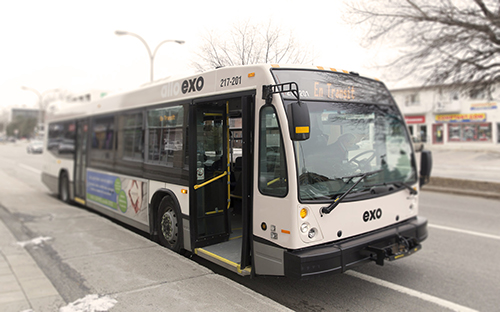Winter bus plan: different operations for different types of snowfall

Snowfall and its potential impacts on service and operations
Exo winter bus plan is inspired by the best practices of several transportation authorities across the globe. In the event of snowfall, this plan is carried out according to four levels of precipitation, with operational responses and precise communications put in place to provide safe and efficient service to transit users. What are the different levels of snowfall?
-
Low precipitation
Approximately 5 cm of snow with no ice.
Potential impacts on service: delays in service because road users and our drivers must adapt their driving habits.
-
Snow flurries
5 to 15 cm of snow in 24 hours and ice.
Potential impacts on service: reduced visibility; road users and our drivers must be extra cautious, which can result in delays and/or cancellations of certain departures if the situation deteriorates.
-
Snowstorm
15 cm of snow and ice resulting in difficult road conditions.
Potential impacts on service: road conditions are dangerous and snow removal and salting operations are difficult, which can result in major delays and/or the cancellation of certain departures.
-
Major snowstorm
More than 15 cm of snow and ice resulting in dangerous road conditions.
Potential impacts on service: during these situations, services may face major delays or even cancellation if the safety of our users is jeopardized. You should expect a certain delay before service resumes as normal to allow the public works crews and our contractors to remove snow and salt the roads, bus stops, sidewalks and parking lots.
Want to know more about the service status? Don’t forget to follow the Twitter feed for your area: Mobile services toolbox.
Did you know?
Bus drivers are trained to adjust their driving to winter conditions. Want to learn more? Read this article about winter bus driving.
